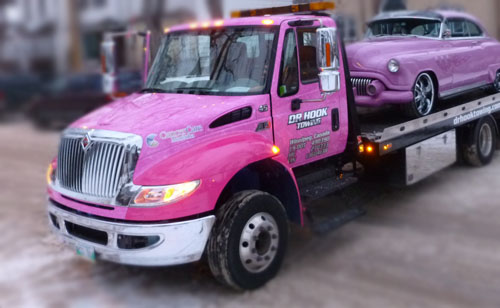Winnipeg is growing, and we at Dr. Hook Towing take pride in the role we have played in making it happen. It is a role we do not take for granted, and which we strive to earn with every service call, for every customer. No matter how big or small the job may be, our team of certified professionals is committed to handling each one with dignity, courtesy and respect.
Dr. Hook Towing has had the privilege of taking part in the hugely successful staging of the U2 360º World Tour concert in Winnipeg, and we continue to assist in the city’s expansion as we keep construction equipment moving where it’s needed. Our fleet will keep yours moving, to and from the job site, safely and professionally.
By utilizing a state-of-the-art fleet of over 65 vehicles, and certified professional operators at the wheel, Dr. Hook has been picking up Winnipeg and delivering premier service since 1983. We look forward to many years of continued growth with our city and our neighbors, and are dedicated to both on our mission to provide you with the level of quality service you have come to expect from us.

